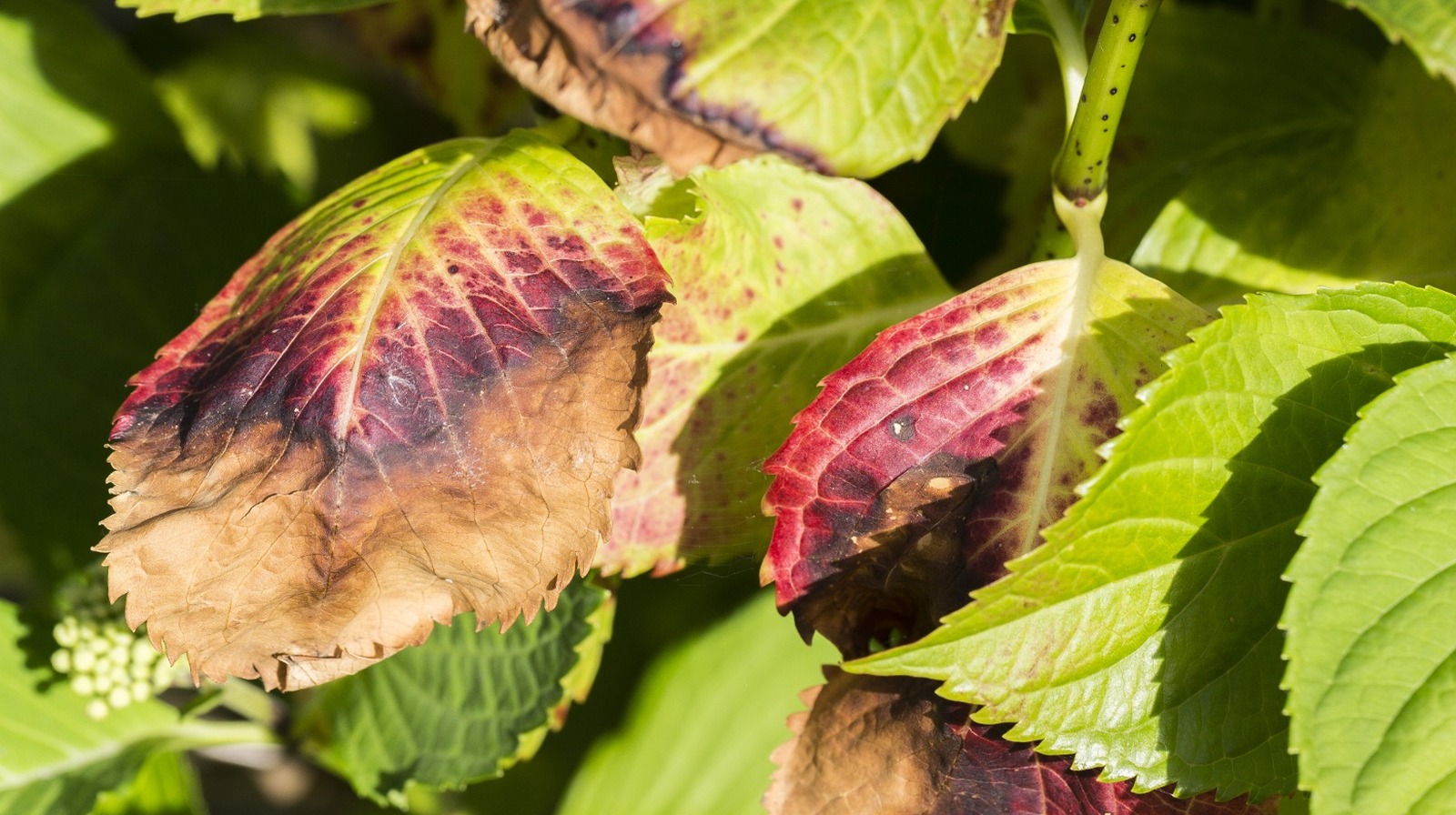Getting The Hydrangea Leaves Turning Yellow To Work
Wiki Article
The 25-Second Trick For Hydrangea Leaves Turning Yellow
Table of ContentsSome Known Factual Statements About Hydrangea Leaves Turning Yellow All About Hydrangea Leaves Turning Yellow9 Simple Techniques For Hydrangea Leaves Turning YellowThe Single Strategy To Use For Hydrangea Leaves Turning Yellow
One possibility is that the plant is not obtaining adequate sunshine. Throughout the cold weather, the days are much shorter, and the sunlight is not as extreme, so see to it to put your Hydrangea in an area where it will access the very least 6 hours of sunshine every day. One more reason for Hydrangea yellow fallen leaves in winter can be excessive water.Ultimately, the fallen leaves may be turning yellow due to temperature level stress and anxiety. Hydrangeas like cooler temperatures, so if the plant remains in an area that gets also warm or too cold, the fallen leaves will turn yellow. If you assume temperature tension may be the concern, try moving your Hydrangea to a various place or safeguarding it from the elements with a cloth wrap.
New development will be observed in very early spring, when you'll discover environment-friendly vegetation growing from stems that may have appeared dead. Nonetheless, if your leaves are transforming brown in springtime or summertime, there are most likely other variables at play. The accurate factors depend on the selection and their growing problems, yet as a whole, brownish hydrangea leaves are an indicator of dehydration and wilting in the warm
In the springtime when the mercury stays reasonably low, they'll do fine. When points warm up over the summertime however, time spent in the very early afternoon rays can trigger unimaginable damage.: Grow your hydrangeas in an area where they'll obtain sunlight in the mornings or nights, yet not during the peak hours.
The Main Principles Of Hydrangea Leaves Turning Yellow
Wilting is brought on by lack of wetness, suggesting there are a couple of excellent methods to use to avoid this from occurring. Offer your hydrangeas a healthy glug of water every few days when the temperature levels are climbing high, and treat the soil to better retain moisture. After watering, a bit of mulch around the base of each plant should aid with this by keeping moisture in the dirt.This disrupts fungis spores from settling. "The Botrytis fungus thrives in awesome and wet conditions, so avoid bathing the entire plant when sprinkling and just water at the roots," shares Roy Nicol, a Master Horticulturist - Hydrangea Leaves Turning Yellow. If you have actually missed out on the chance for prevention and are handling an infection you should remove all dead or seriously infected fallen leaves from the plant and ruin them to avoid additional spread
As a general general rule, we suggest eliminating leaves when they are 50% brown or greater. While browning triggered by any kind of factor can't be reversed, taking the rehabilitative activity defined above will certainly urge the plant to expand new leaves so the harmed fallen leaves either diminish naturally or can be removed by the garden enthusiast.
Hydrangeas should be sprinkled just when the top few inches of dirt are dry, and ought to be given a complete soaking each time. Underwatered hydrangeas are likely to have yellow, wilting, and sagging fallen leaves. Enhance the regularity and quantity of watering for your hedge to assist resolve this issue. Hydrangeas favor relatively moist (yet not soaked) soil, so offer the origins a good saturating and enable water to be taken in right into the dirt before using a lot more.
What Does Hydrangea Leaves Turning Yellow Mean?
The way you take care of hydrangea leaves transforming yellow depends on the crucial issue causing the yellow fallen leaves. This can be hard to identify, however as soon as you do you will be able to change your plant treatment as necessary to look after the issue. As stated before, a typical concern with hydrangeas is nutrient deficiencies.During the top expanding season, you ought to water at a price of concerning 1 inch per week. If you are stressed over not properly watering your hydrangeas, there are a number of things you can do. Adding compost to the base of the plants over the origin zone aid to manage the temperature level around the shrub and keep water in the soil.

If it is too serious, some plants will never recuperate from transplant shock and will certainly proceed to decrease till they pass away. Minimize transplant shock by including as numerous roots as possible when digging up your plant to relocate. Be sure to offer more water than normal in the weeks adhering to growing to aid your plant recoup and expand brand-new origins.
Fascination About Hydrangea Leaves Turning Yellow
To avoid spreading out fungal illness, make certain to thouroughly clean and disinfect any pruning devices continue reading this before and after usage. You can try to purge the roots with water to get rid of excess fertlizer.
If you do not water your hydrangea plant for even more than a week, the leaves will certainly begin transforming yellow. Fungal illness that attack the plants tend to reveal indications on the roots and the fallen leaves of the plant. One of these diseases is origin rot, which makes it difficult for the plant to feed effectively.
Root rot takes place when pathogens use up the origin cells as hosts and stop the cell from functioning. Otherwise dealt with, this condition can ultimately lead to the plant passing away. Leaf area is another fungal illness that Hydrangea Leaves Turning Yellow can target hydrangea. It results in the fallen leaves turning yellow and the appearance of brownish and purple areas on the fallen leaves.
Report this wiki page